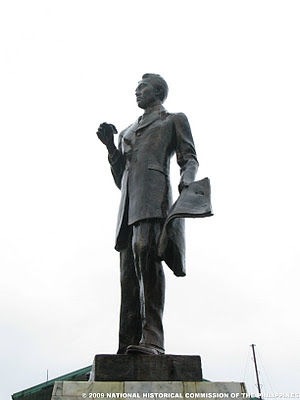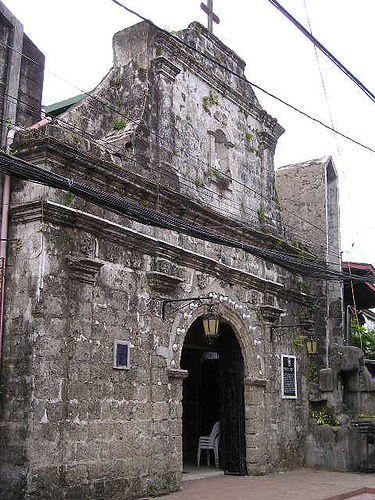|
Parang (other)
Parang is a form of folk music in Venezuela and Trinidad and Tobago. Parang may also refer to: * Parang (batik), an Indonesian batik motif * Parang (knife), a type of machete from the Malay archipelago region * locations in the Philippines: **Parang, Jose Panganiban **Parang, Maguindanao, a municipality in the province of Maguindanao, Philippines. **Parang, in Marikina **Parang, Sulu * Parâng Mountains group, in the Southern Carpathians, Romania See also *Farang Farang ( fa, فرنگ) is a Persian (and Southeast Asian) word that originally referred to the Franks (the major Germanic tribe) and later came to refer to White Europeans in general. The word "Farang" is a cognate and originates from Old F ... * Barang (other) * {{disambiguation ... [...More Info...] [...Related Items...] OR: [Wikipedia] [Google] [Baidu] |
Parang
Parang is a popular folk music originating from Venezuela and Trinidad and Tobago that was brought to Trinidad and Tobago by Venezuelan migrants who were primarily of Amerindian, Spanish, Mestizo, Pardo, and African heritage, something which is strongly reflected in the music itself. The word is derived from two Spanish words: ''parranda'', meaning "a spree”, and ''parar'' meaning "to stop". In the past, it was traditional for parang serenaders to pay nocturnal visits to the homes of family and friends, where part of the fun was waking the inhabitants of the household from their beds. Today, parang is especially vibrant in Trinidad and Tobago communities such as Paramin, Lopinot, and Arima. A new form of parang, soca parang, has emerged. Soca parang is a combination of soca and parang. Performance In Trinidad, traditional parang music is largely performed around Christmastime, when singers and instrumentalists (collectively known as the ''parranderos'') travel from house t ... [...More Info...] [...Related Items...] OR: [Wikipedia] [Google] [Baidu] |
Parang (batik)
Parang batik ( jv, ꧋ꦧꦠꦶꦏ꧀ꦥꦫꦁ, id, Batik Parang) is one of the oldest Indonesian batik motifs. Parang comes from the Javanese word ''Pereng'' which means slope. Parang depicts a diagonal line descending from high to low. The arrangement of the S motifs intertwining unbroken symbolizes continuity. The basic shape of the letter S is taken from the ocean waves which depict a spirit that never goes out. Parang batik is an original Indonesian batik motif that has existed since the time of the Kartasura (Solo), Mataram palace (Present day Central Java). The Parang batik motif was created by Sultan Agung of Mataram during his visit to the southern coast of Java ( id, Pantai selatan). The Sultan got his inspiration from the waves rolling in the Parangtritis sea. The Meaning and Philosophy of Parang Batik Parang batik has a high meaning and has a high philosophical value, this batik motif is one of the oldest basic batik motifs in Indonesia. Parang has the meaning ... [...More Info...] [...Related Items...] OR: [Wikipedia] [Google] [Baidu] |
Parang (knife)
The parang (; Dusun: ''dangol'') is a type of knife used across the Malay archipelago. It is often mistakenly assumed to be a sword; however, there is no evidence that it has ever been used in a formal military conflict, nor that its intended purpose was to be used as a combat weapon. Although some may argue that it could be called a machete or a chopper as it is a direct variation of the modern machete, its academic status remains as a knife. Design Typical vegetation in South East Asia is more woody than in South America, and the parang is therefore optimized for a stronger chopping action with a heavier blade and a " sweet spot" farther forward of the handle; the blade is also beveled more obtusely to prevent it from binding in the cut. This is the same rationale and (in practical terms) the same design as the Indonesian golok and very similar to the Filipino bolo. The parang blade ranges from 10 to 36 inches (25.4 to 91.44 cm) in length. The parang has a weight of up to ... [...More Info...] [...Related Items...] OR: [Wikipedia] [Google] [Baidu] |
Parang, Jose Panganiban
Jose Panganiban, officially the Municipality of Jose Panganiban ( tl, Bayan ng Jose Panganiban), is a 2nd class municipality in the province of Camarines Norte, Philippines. According to the 2020 census, it has a population of 63,662 people. The municipality was formerly known as Mambulao, a word taken from “''mambulawan'',” meaning bountiful in gold. It was renamed to honor José María Panganiban on December 1, 1934. Geography Barangays Jose Panganiban is politically subdivided into 27 barangays. Climate Climate in the Philippines is classified into four types. Camarines Norte's climate is classified under Type II, which is characterized by the absence of a dry season, with maximum rain period occurring between December to February, and minimum monthly rainfall occurring between March to May. The northeast monsoon moves mainly north and northeast trending to easterly towards the end of the season. Average temperature ranges from 20 degrees Celsius to 28.3 degre ... [...More Info...] [...Related Items...] OR: [Wikipedia] [Google] [Baidu] |
Jose Panganiban, Camarines Norte
Jose Panganiban, officially the Municipality of Jose Panganiban ( tl, Bayan ng Jose Panganiban), is a 2nd class municipality in the province of Camarines Norte, Philippines. According to the 2020 census, it has a population of 63,662 people. The municipality was formerly known as Mambulao, a word taken from “''mambulawan'',” meaning bountiful in gold. It was renamed to honor José María Panganiban on December 1, 1934. Geography Barangays Jose Panganiban is politically subdivided into 27 barangays. Climate Climate in the Philippines is classified into four types. Camarines Norte's climate is classified under Type II, which is characterized by the absence of a dry season, with maximum rain period occurring between December to February, and minimum monthly rainfall occurring between March to May. The northeast monsoon moves mainly north and northeast trending to easterly towards the end of the season. Average temperature ranges from 20 degrees Celsius to 28.3 degrees Cel ... [...More Info...] [...Related Items...] OR: [Wikipedia] [Google] [Baidu] |
Parang, Maguindanao
Parang, officially the Municipality of Parang ( Maguindanaon: ''Inged nu Parang'', Jawi: ايڠايد نو ڤارڠ; Iranun: ''Inged a Parang'', ايڠايد ا ڤارڠ; tl, Bayan ng Parang), is a 1st class municipality in the province of Maguindanao del Norte, Philippines. According to the 2020 census, it has a population of 102,914 people. The town was part of the province of Shariff Kabunsuan from October 2006 until its nullification by the Supreme Court in July 2008. History The history of Parang traces back to the era when it used to be an integral part of the Maguindanao Sultanate. In June 1851, the Spanish military government based in Zamboanga sent forces to Polloc, presently a barangay of Parang, and seized it. Having a natural deep water harbor, the Spanish then set up a fortress and a naval base at Polloc, from which they would launch military operations against the Moros of the Pulangui Valley. Polloc eventually grew into a small town that by 1860 it was home to ... [...More Info...] [...Related Items...] OR: [Wikipedia] [Google] [Baidu] |
Marikina
Marikina (), officially the City of Marikina ( fil, Lungsod ng Marikina), is a 1st class highly urbanized city in the National Capital Region of the Philippines. According to the 2020 census, it has a population of 456,159 people. It is located along the eastern border of Metro Manila, Marikina is the main gateway of Metro Manila to Rizal and Quezon provinces through Marikina–Infanta Highway. It is bordered on the west by Quezon City, to the south by Pasig and Cainta, to the north by San Mateo, and to the east by Antipolo, the capital of Rizal province. It was founded by the Jesuits on the fertile Marikina Valley in 1630. Marikina was the provincial capital of the Province of Manila under the First Philippine Republic from 1898 to 1899 during the Philippine Revolution. Following the onset of American occupation it was then organized as a municipality of Rizal Province, prior to the formation of Metro Manila in 1975. Formerly a rural settlement, Marikina is now primari ... [...More Info...] [...Related Items...] OR: [Wikipedia] [Google] [Baidu] |
Parang, Sulu
Parang, officially the Municipality of Parang ( Tausūg: ''Kawman sin Parang''; tl, Bayan ng Parang), is a 2nd class municipality in the province of Sulu, Philippines. According to the 2020 census, it has a population of 71,495 people. Geography Barangays Parang is politically subdivided into 40 barangay A barangay (; abbreviated as Brgy. or Bgy.), historically referred to as barrio (abbreviated as Bo.), is the smallest administrative division in the Philippines and is the native Filipino term for a village, district, or ward. In metropolita ...s. Climate Demographics Economy References External links Parang Profile at PhilAtlas.com* Philippine Standard Geographic Code Parang Profile at the DTI Cities and Municipalities Competitive IndexPhilippine Census InformationLocal Governance Performance Management System Municipalities of Sulu {{ARMM-geo-stub ... [...More Info...] [...Related Items...] OR: [Wikipedia] [Google] [Baidu] |
Parâng Mountains Group
The Parâng ( hu, Páring-hegység) mountain group is a subgroup of mountains in the Southern Carpathians. It is named after the highest of the mountains in the group, the Parâng Mountains. Boundaries The Parâng group is bounded: *in the east, by the Olt River *in the west, by the Jiu River Mountains *Parâng Mountains (''Munții Parâng'') *Șureanu Mountains (''Munții Șureanu''/''M. Sebeșului'') * Cindrel Mountains (''Munții Cindrel''/''M. Cibinului'') *Lotru Mountains (''Munții Lotrului''; literally: ''Mountains of the Thief'') *Căpățână Mountains Căpățână or Căpățînă is a Romanian surname. Notable people with the surname include: * Chesarie Căpățână (1784–1846), Wallachian bishop * Eugen Căpățână (born 1986), Romanian rugby union footballer * Mihai Căpățînă (born ... (''Munții Căpățânii''; literally: ''Mountains of the Head'' or ''Mountains of the Skull'') See also * Carpathian Mountains * Retezat-Godeanu Mountains group * F� ... [...More Info...] [...Related Items...] OR: [Wikipedia] [Google] [Baidu] |
Farang
Farang ( fa, فرنگ) is a Persian (and Southeast Asian) word that originally referred to the Franks (the major Germanic tribe) and later came to refer to White Europeans in general. The word "Farang" is a cognate and originates from Old French: "". During the crusades, Frankish control was extended further in the Middle East. Unlike previous Franks, these Franks were almost all Christian as opposed to older Franks who were mixed groups of different religions. Over time, the word began to be used more generically. In 12th century, the term Frank became associated with all of Western Europeans (including the French, Italians, and the Flemish) in the Muslim world. The term ''Frangistan'' ( fa, فرنگستان) was used by Thai and Muslims and was also used frequently by Persians. Muslim traders referred to all European traders as Farang and it entered much of the languages of South Asia and Southeast Asia as a term. Name The word ''farang'' is from Persian word ''faran ... [...More Info...] [...Related Items...] OR: [Wikipedia] [Google] [Baidu] |


